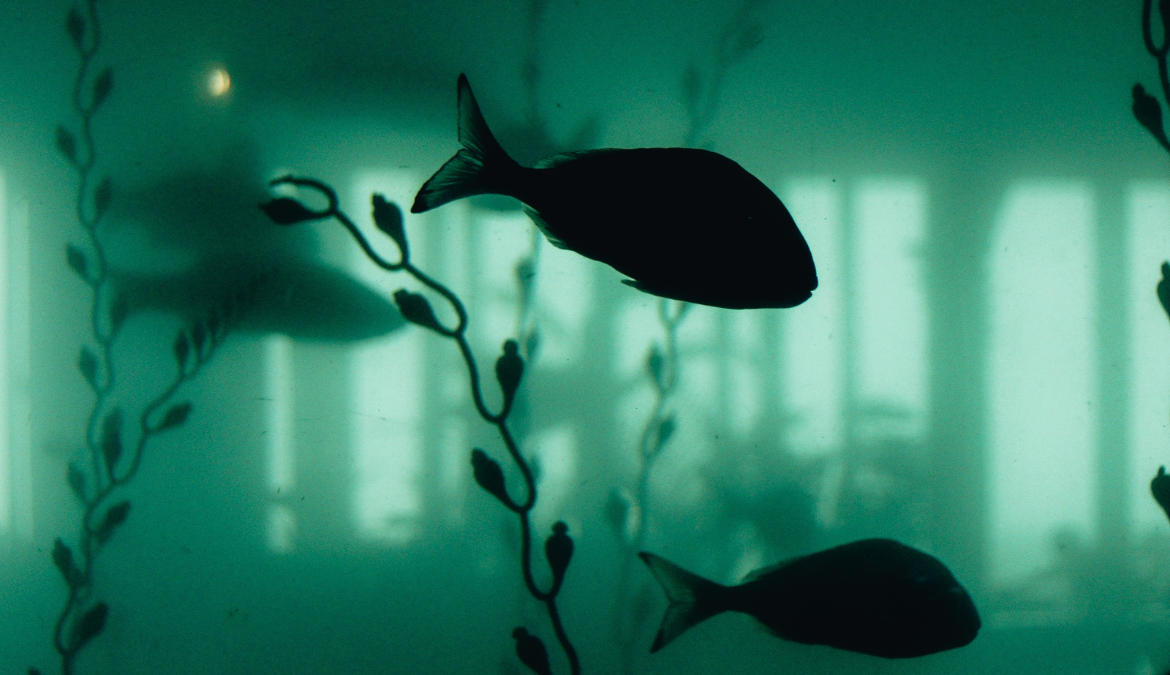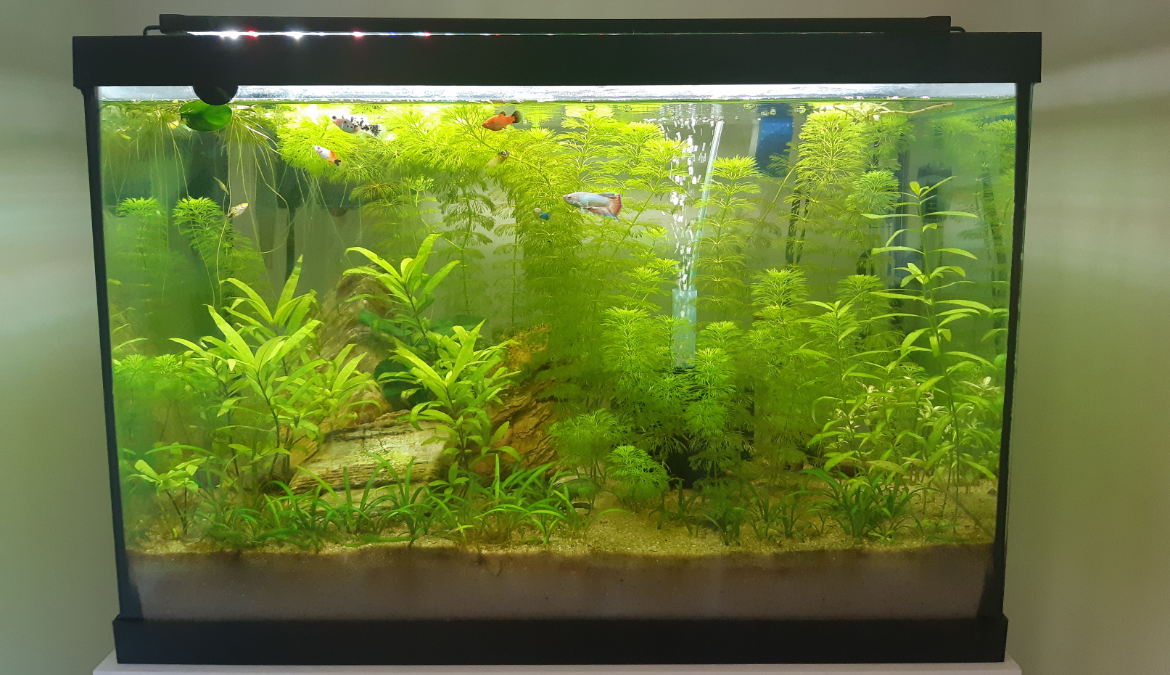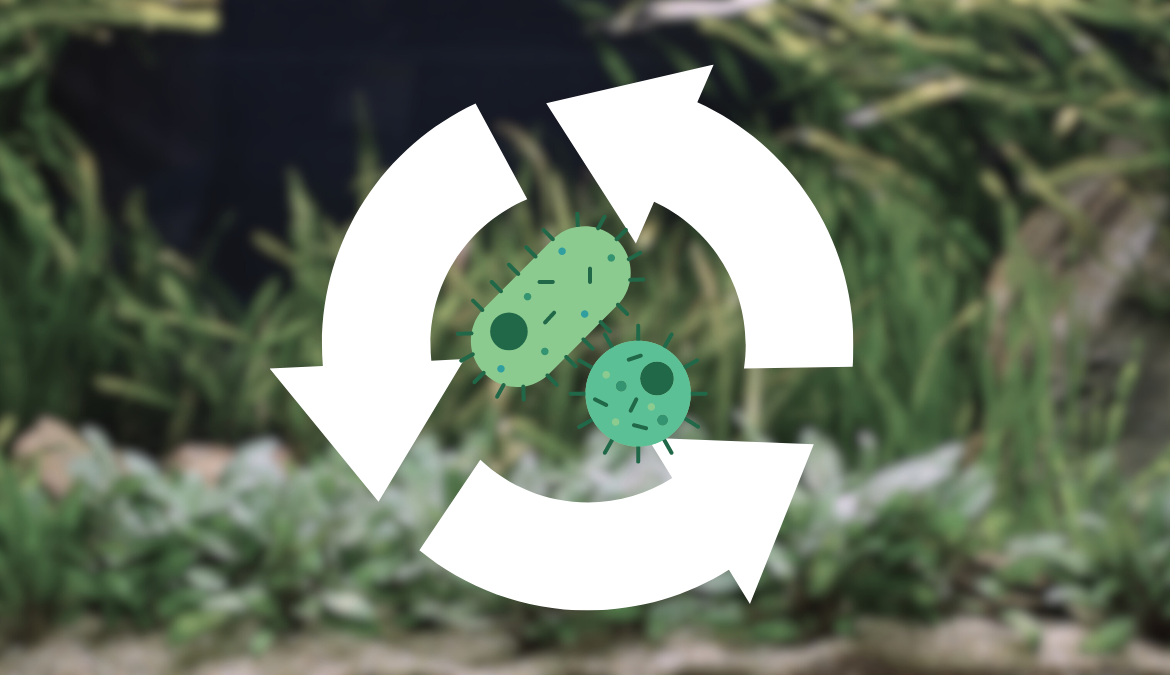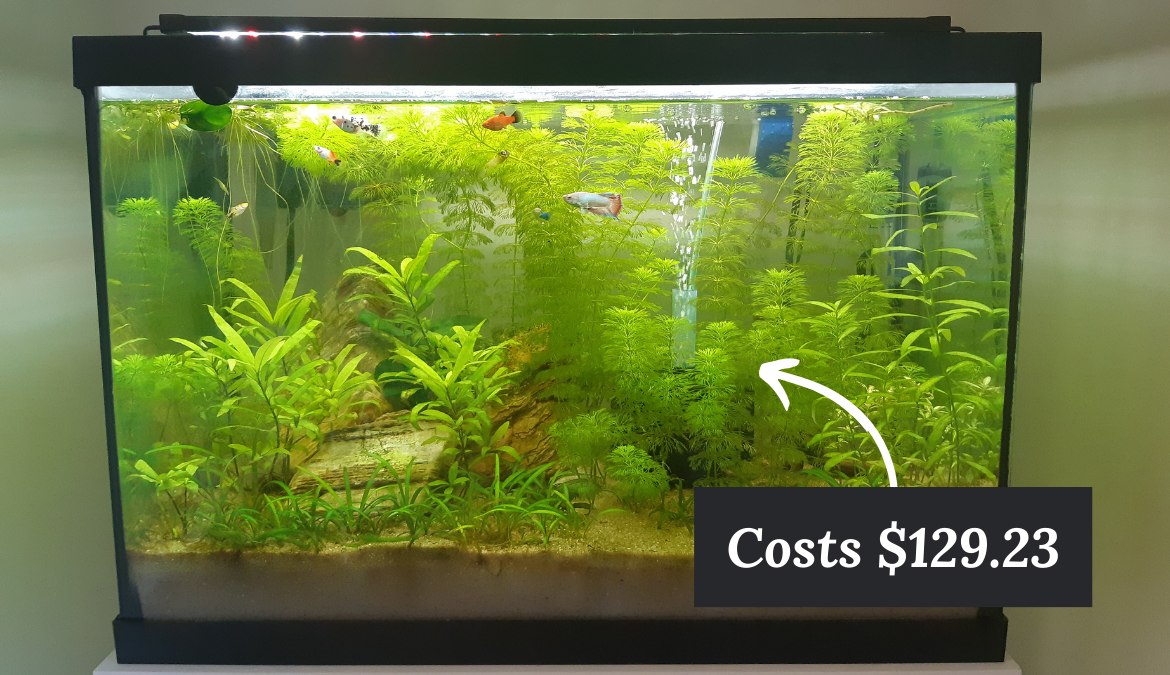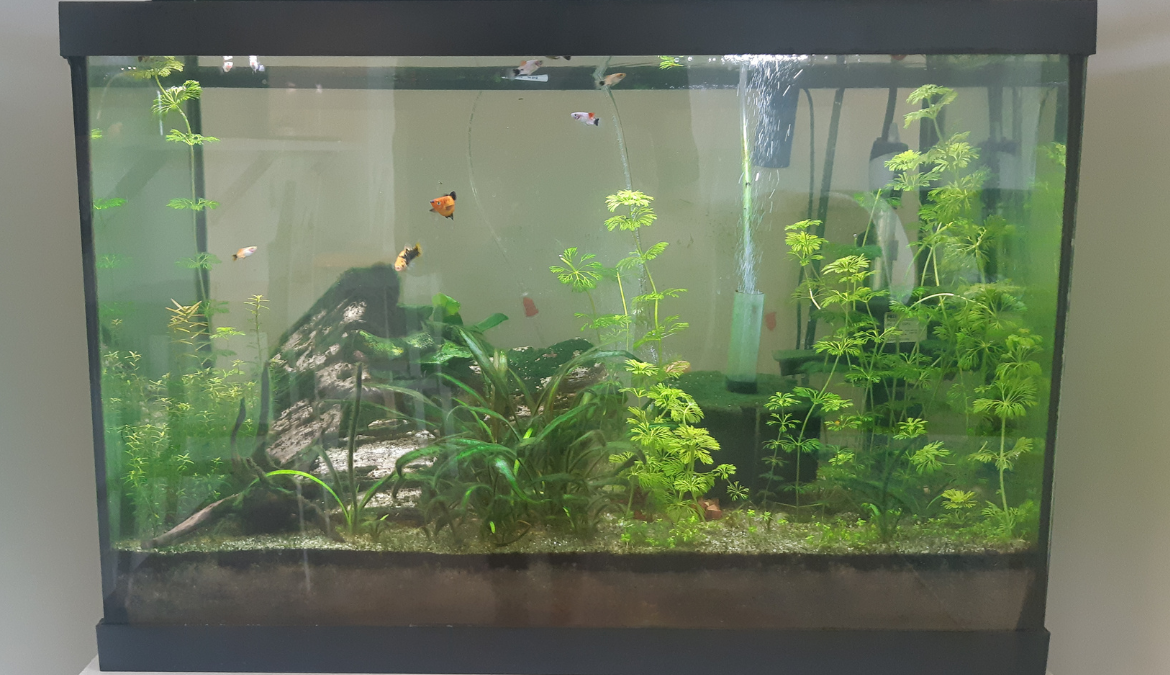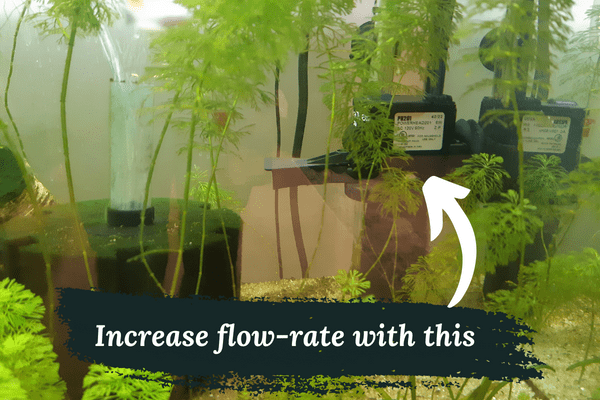All aquatic plants require CO2 to photosynthesize and produce glucose. However, pressurized CO2 systems are not required to provide adequate CO2 to an aquarium. Small amounts of CO2 are naturally present in water from fish and and bacteria respiration and from the atmosphere.
There are many factors that affect an aquarium’s CO2 levels. In this article, we explore why CO2 is important and how you can grow healthy aquatic plants in your low-tech aquarium.
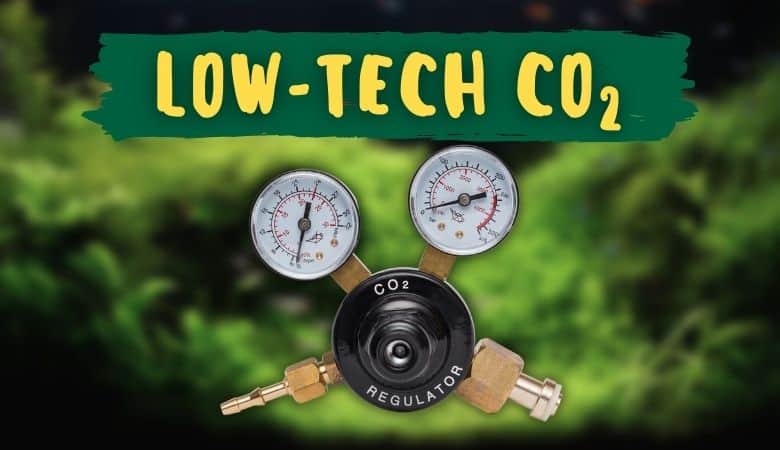
Contents
Why do low-tech plants need CO2?
Aquatic plants use carbon dioxide (CO2) in the process of photosynthesis to create glucose. This glucose is used as energy to help plants grow.
CO2 is one of a few important ingredients in maintaining healthy aquatic plant life. The other key ingredients are light and fertilization.
Plant leaves contain organs called chloroplasts. Inside these chloroplasts are pigments called chlorophyll. Chlorophyll absorb light waves and use its energy to convert CO2 into glucose and oxygen.
The glucose is used as energy for the plant to grow, while the oxygen is released into the surrounding water.
Can I grow plants without CO2?
No. Plants will not grow if they don’t have access to CO2. However, this does not mean you need an expensive high-tech CO2 system to grow aquatic plants.
The truth is that CO2 is naturally present in pretty much all water sources. There is an abundance of CO2 present in the atmosphere. This atmospheric CO2 is absorbed by water as a dissolved gas.
This means that adding plain tap water to your tank will provide plants with some level of CO2.
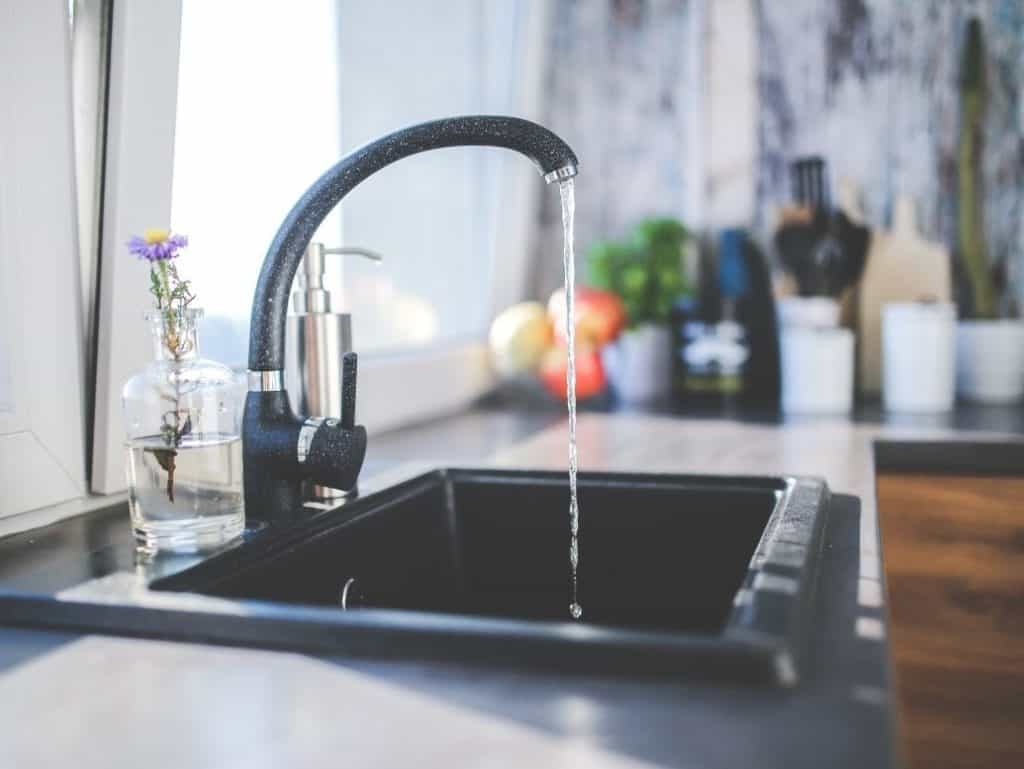
However, the may be factors that are limiting how much CO2 is in your aquarium which we will dive into next.
How do fish provide CO2 for plants?
Fish, bacteria and other micro-organisms breathe in oxygen and exhale CO2, similar to how humans do. This acts as a secondary source of CO2 to your aquarium as well.
Fish and plants have a symbiotic relationship with each other. Plants convert CO2 into glucose and oxygen. And fish breath oxygen and produce CO2. They each produce what the other needs.
How much CO2 do low-tech plants need?
A low-tech tank without CO2 injection will typically have a base concentration of between 2-3ppm of CO2, which is adequate for growing easy and undemanding aquatic plants.
The base concentration of CO2 is determined by atmospheric equilibrium
2-3ppm CO2 is the atmospheric equilibrium that a body of water will typically stabilize at. In other words, the balance between CO2 in the atmosphere and CO2 in an aquarium will naturally balance to a point of equilibrium.
It’s useful to understand the concept of equilibrium when thinking about CO2 and oxygen levels in your aquarium.
Imagine you have a can of soda, which has CO2 on the inside at a high pressure, and the air outside of the can at a lower pressure.
When you crack the can open, the pressure inside releases and equalizes with the atmosphere around it. In nature, gases are always moving from a state of high pressure to low pressure to achieve equilibrium.
The same is true for our aquariums.
The concentration of oxygen and CO2 in our aquariums are constantly trying to achieve equilibrium with the air above it.
Aquarium water absorbs dissolved CO2 gas from the air around it
The air outside of our tanks contains approximately 400ppm of CO2. Because the water in our tank is a liquid and the air is a gas, the equilibrium point causes the concentration of CO2 in our tanks to be approximately 2-3ppm.
This is before any other factors which may alter the CO2 levels, such as fish respiration and decaying plant matter.
High-tech tanks increase CO2 concentrations up to 30ppm
High-tech tanks with pressurized CO2 canisters are able to increase a tank’s CO2 levels by constantly injecting CO2 gas. This added CO2 causes an unequal concentration of CO2 in the aquarium compared to the air around it.
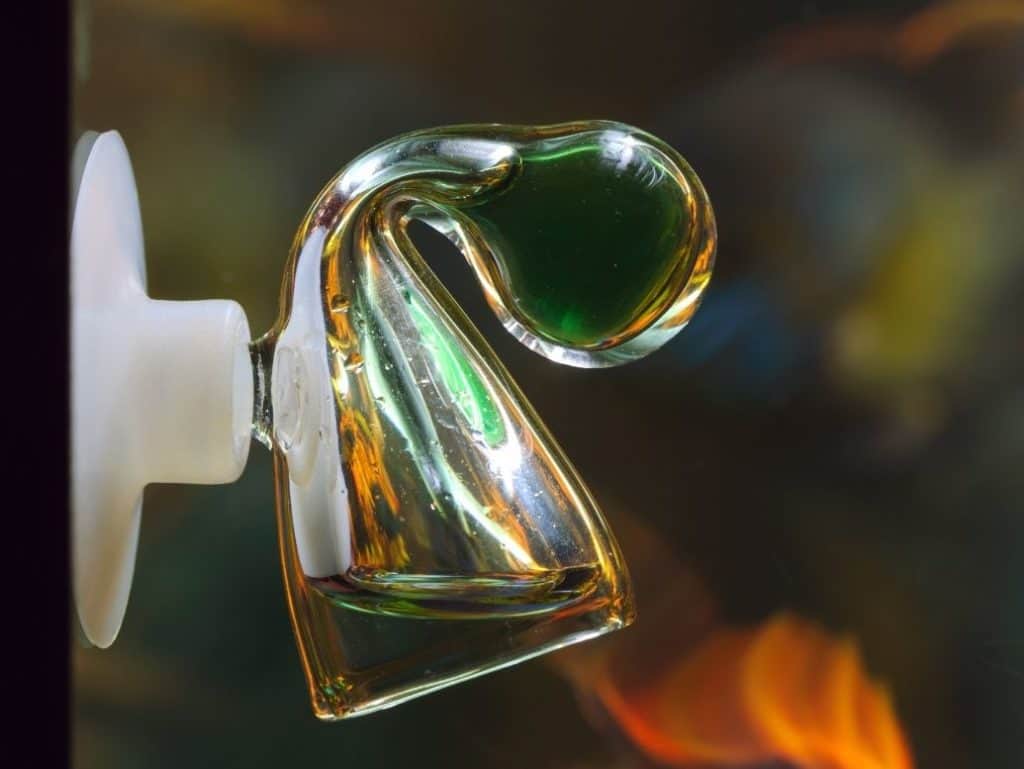
Therefore, atmospheric equilibrium is constantly working against a CO2 system to try and remove CO2 from it.
High-tech tanks may increase CO2 levels to as high as 30ppm to achieve optimal plant growth, while not harming fish inhabitants.
How do I increase CO2 in my tank?
Remove air stones
You can increase an aquarium’s CO2 concentration by removing air stones. Air stones increase the surface area where your tank water and air meet. This increases the rate at which excess CO2 can escape your tank.
Air stones work by creating bubbles that float to the water surface and pop. This popping creates a larger surface for which atmospheric equilibrium can occur.
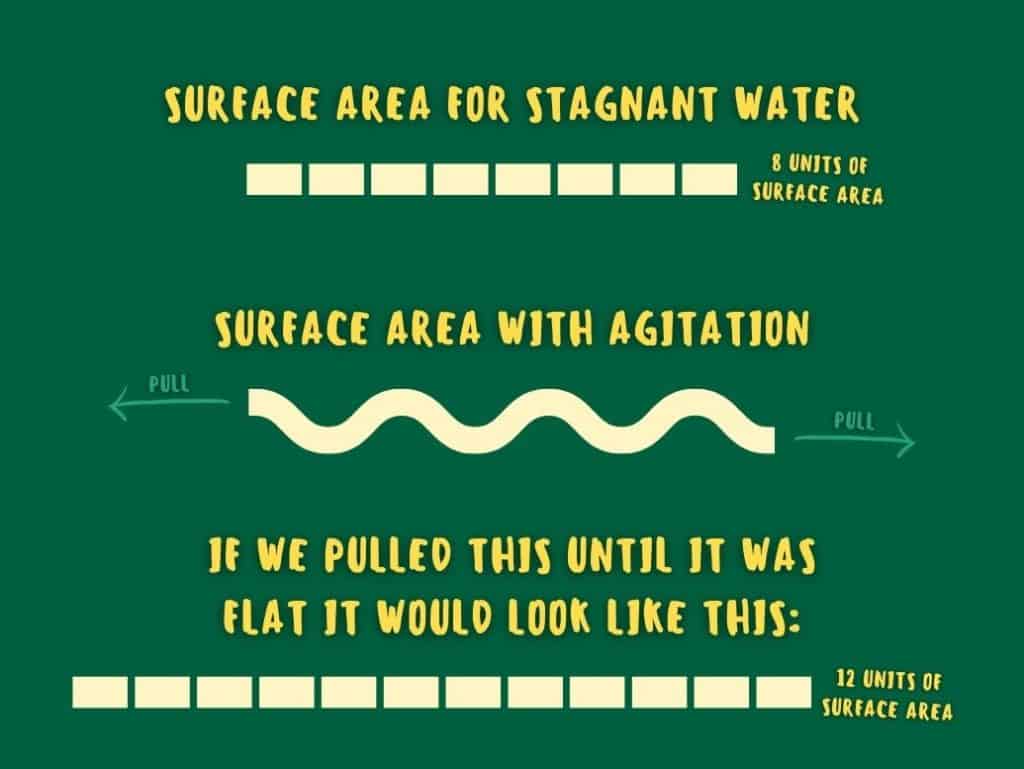
As you can see in the diagram above, the agitated water surface has 12 units of surface area compared to just 8 when the water is stagnant.
Remember, atmospheric equilibrium works to achieve a balanced concentration between the water in your aquarium and the air around it. So an air stone only increases the rate at which this process can occur.
Meaning, an air stone will only decrease your tank’s CO2 concentration if it is already higher than the equilibrium point.
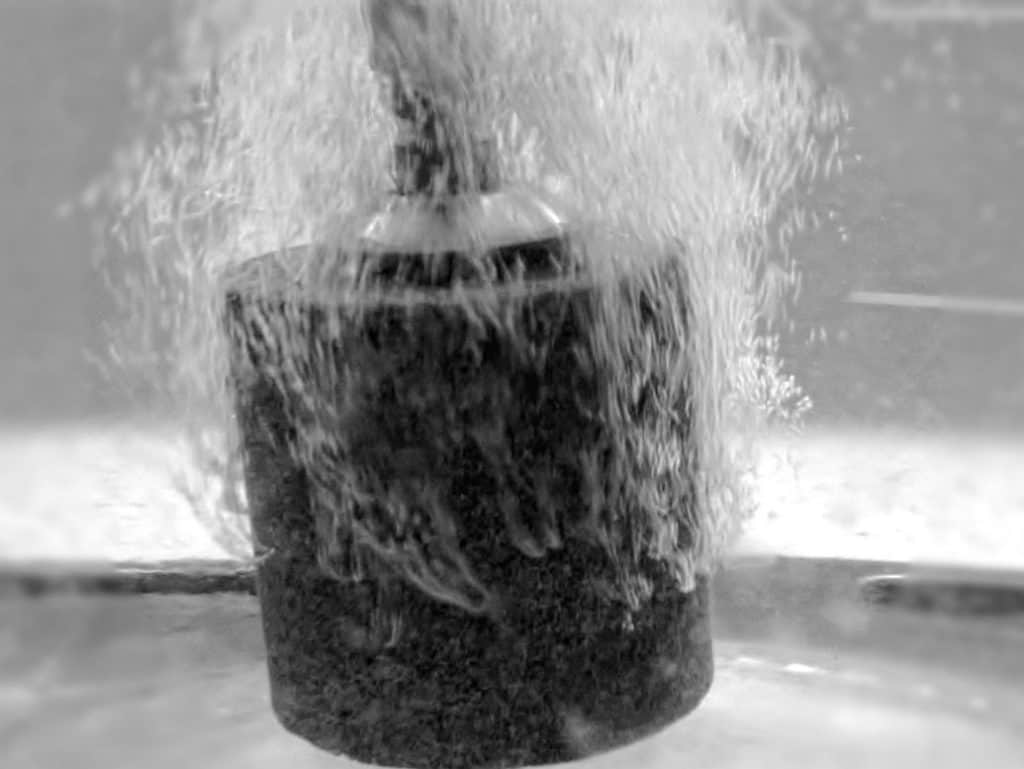
And if your tank has and equal or lesser amount of CO2 than this equilibrium point, the air stone will not reduce the CO2 levels any further.
This applies to oxygen as well. Adding a bunch of air stones will not increase the oxygen levels above and beyond what is naturally possible via atmospheric equilibrium.
Add more fish
The more fish you have in your tank, the more carbon dioxide they will produce via respiration. We do not recommend overstocking your aquarium, though.
But if you have room to add a few more fish then that may be a viable method for slightly increasing your tank’s CO2 levels.
Decaying plants
Dead plant leaves and decomposing soil will produce a source of carbon for your plants. So consider retaining this decomposing plant material instead of vacuuming it out.
This material will also produce more ammonia, which will promote the growth of larger bacteria colonies. This will slightly increase CO2 levels due to bacterial respiration.
Other methods to counteract lower CO2 levels
The reason you may be researching CO2 levels is because your plants are not growing as well as you would like them to be.
So here are a few tips for improving plant growth when you are unable to increase CO2 levels.
Determine whether or not CO2 deficiency is actually the problem
For starters, it’s possible that your plants are not growing because of another reason entirely. For example, perhaps they’re not getting enough light or nutrients.
Here are a few common symptoms of low CO2:
- Stems narrowing towards the top
- Skinny leaves
- New leaves grow smaller than they used to
- Plants don’t look as full or bushy
Here are a few common symptoms of macro or micronutrient deficiencies:
- Leaves are turning yellow
- New leaves are pale or yellow, while old leaves are still green
- Pin holes in leaves
- Leaves are melting off
- Leaves are curling
- Leaf veins appear much darker than the leaf tissue
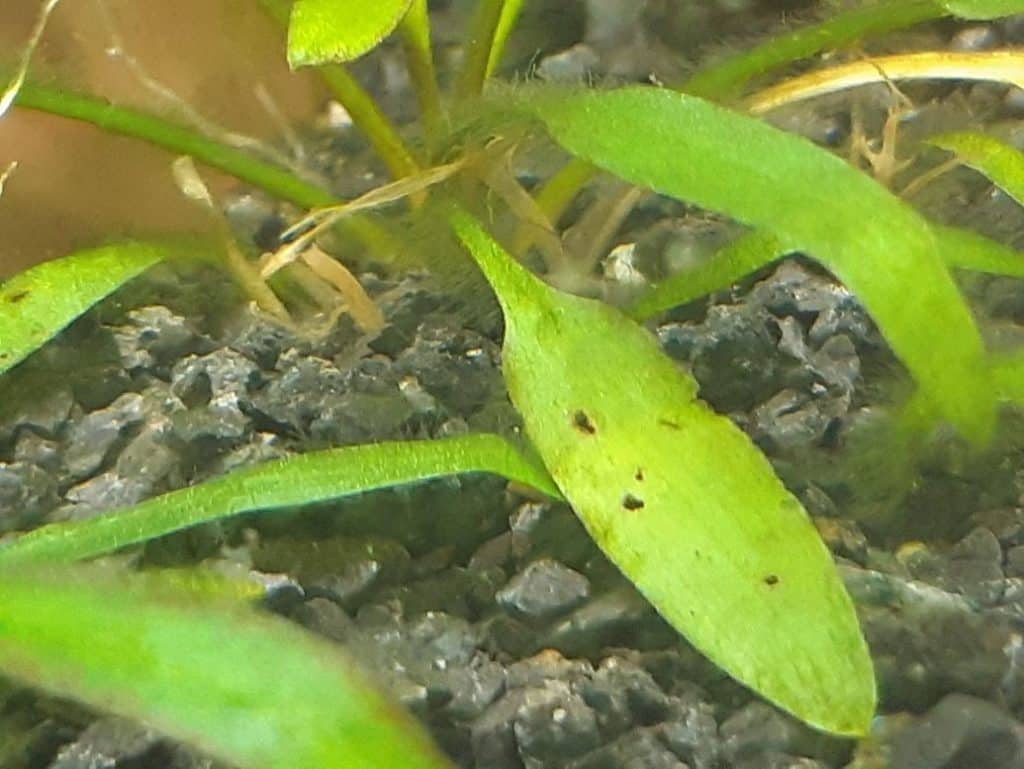
If you’re noticing some of these symptoms then you may be experiencing a lack of some macro or micronutrients. In this case, consider examining your root tab or liquid fertilization routine to see how you can provide better plant nutrition.
Choose easily grown plants
Some plants are simply more demanding than others. It’s possible that you’ve chosen to try and grow plants that require a medium (5-15ppm) or high-concentration (15-30ppm) of CO2 to thrive.
If this is your first planted tank, we recommend choosing easily grown plants so you can have more success. Then progress to more advanced plants later on.
In our experience, this makes keeping plants a lot more fun!
Here are a few easily grown plants:
- Cryptocoryne varieties
- Anubias varieties
- Hygrophila varieties
- Sword plants
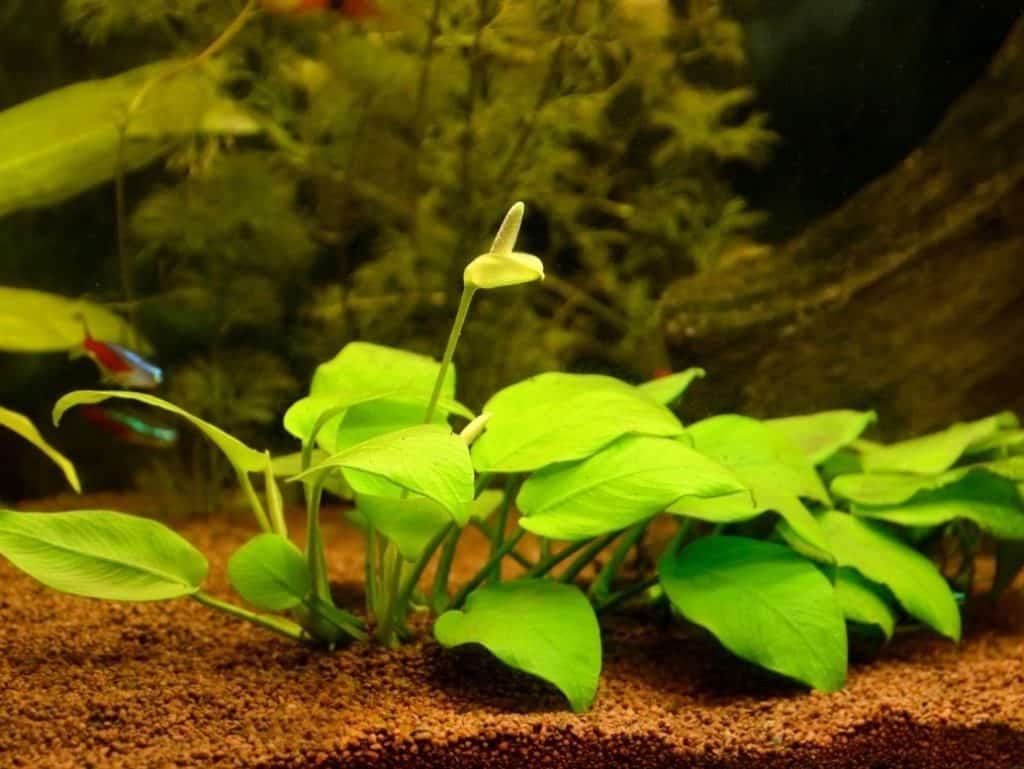
Consider emergently grown plants
Emergent plants are plants that can be grown both in and out of water. When plants can grow out of water, they gain access to the virtually endless supply of atmospheric CO2, making them much easier to grow.
Here are a few great aquatic plants that can be grown emergently:
- Hygrophila difformis (water wisteria)
- Bacopa caroliniana
- Java moss
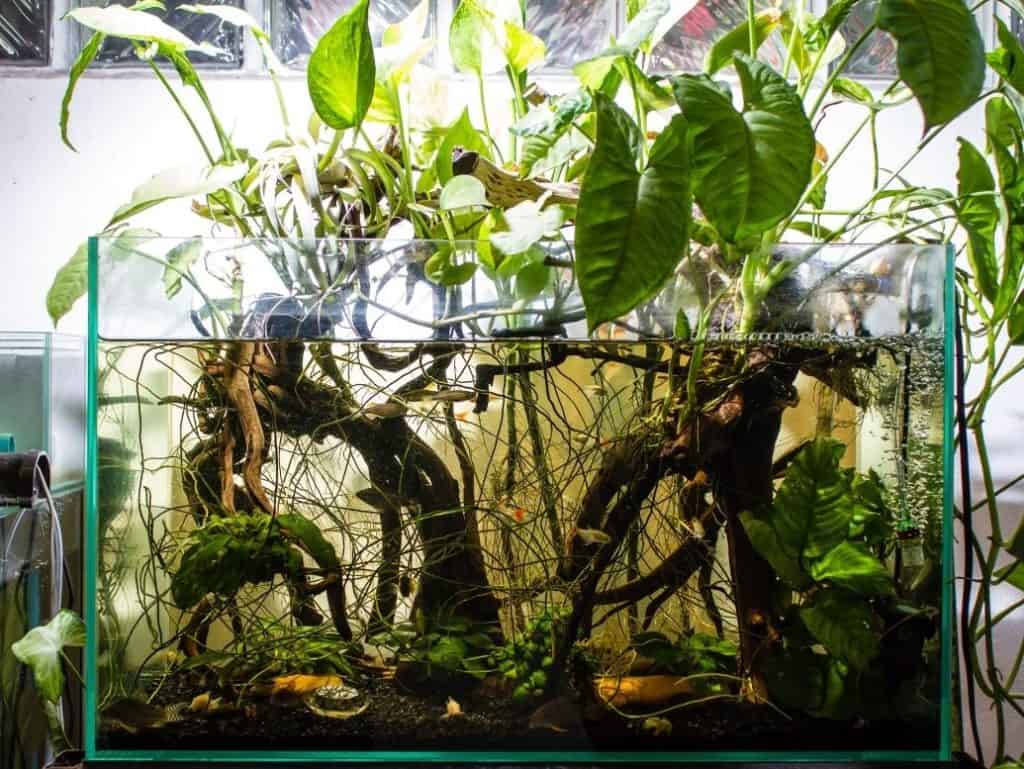
Balancing CO2 in low-tech tanks
It’s worth mentioning that CO2, light and fertilizers should be in balance to achieve healthy plant growth and to minimize algae blooms.
In low-tech tanks, because the concentration of CO2 is limited, you should be matching your light intensity and fertilization to your CO2 levels.
If you provide too much light to an aquarium with little CO2, the excess light energy can not be fully utilized. As a result, opportunistic algae will use the energy instead to grow.
We recommend adding your lights on a timer for 8-hours per day to begin with and monitor algae growth. If algae growth occurs, either decrease the light brightness or decrease the duration from 8-hours to 6-hours.
You can buy automatic light timers so you don’t have to remember to tun them on and off yourself.


